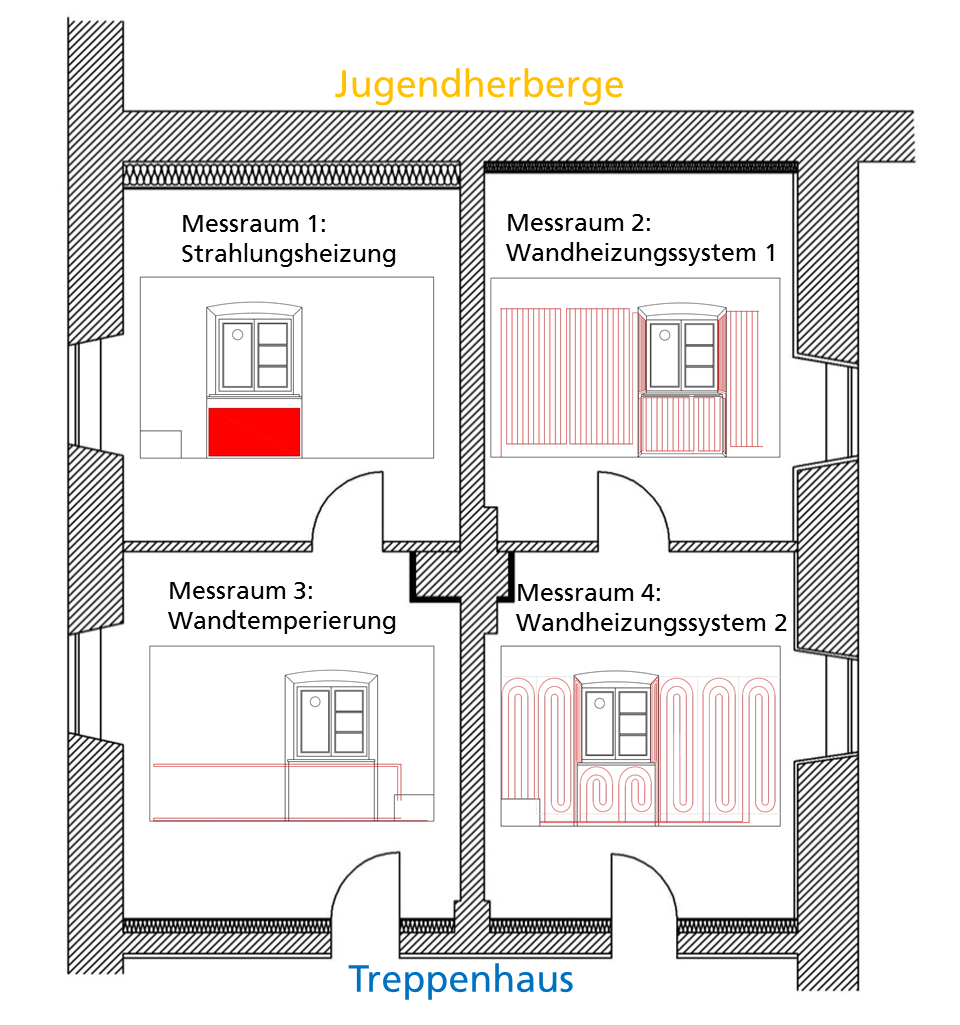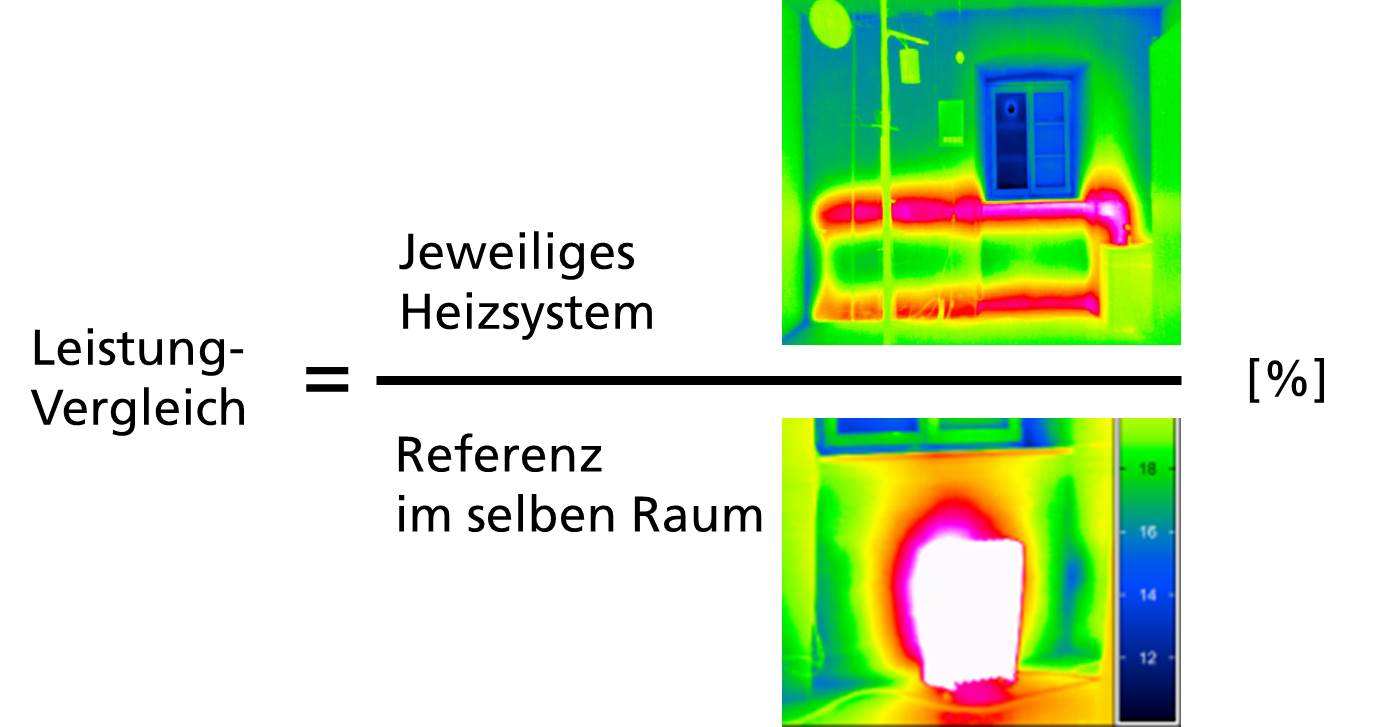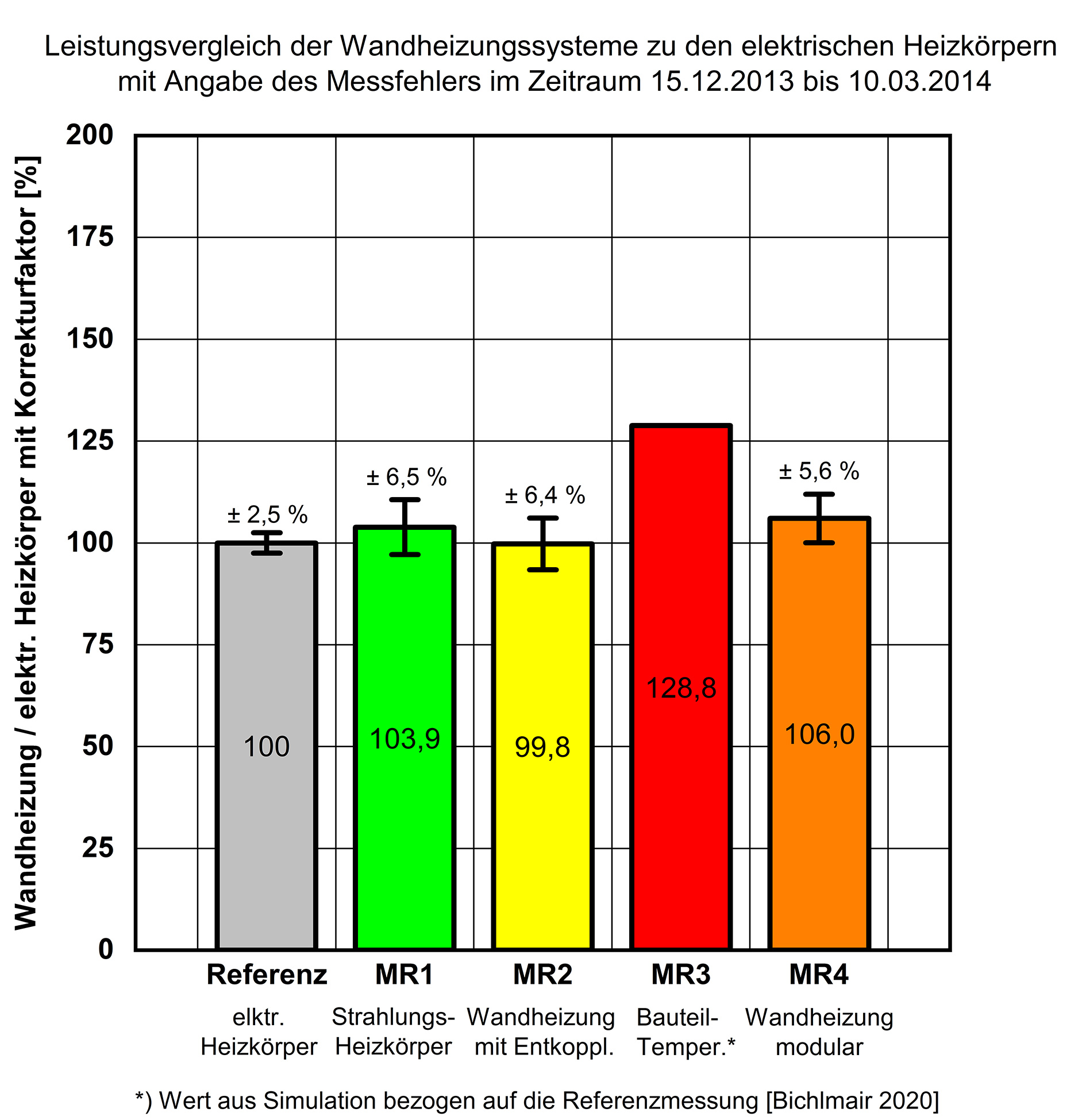


How can historical buildings be renovated in an energy-efficient way? This topic has been largely neglected up till now – as have developments in the corresponding systems technology. But researchers at the Fraunhofer Center for Conservation and Energy Performance of Historical Buildings Benediktbeuern have taken up exactly this issue. What is particularly interesting about their research is that it is carried out on a real old building. The researchers installed four different heating systems, some of which innovative, in four adjacent rooms of a similar size. However, their investigations showed how complex it is to make comparative energy analyses in real buildings. Despite their best efforts, they were unable to create comparable conditions.
Therefore, the researchers tried a new approach. They compared the energy consumption values of the heating systems in each room against those of a reference heating system - an electric heater in the window recess. In other words, they compared each room with itself. Every day, they recalculated the characteristic values they used for the comparison and averaged them over several weeks. Taking this average, they calculated the consumption values of the various heating systems compared to those of the reference heating system. The result showed that almost all the wall heating systems studied consumed similar amounts of energy as the conventional, convective heater. Only the “wall temperierung” heating system proved to be significantly more energy-intensive than the electrical reference heater.
But when it comes to planning, energy is not the only aspect which needs to be considered. Potential positive effects that protect the building structure or improve the level of comfort must also be taken into account. The results showed that all the systems achieve lower stratification of room air temperature. In other words, the room temperature is more even from floor to ceiling. A further advantage is that wall heating systems are much better at preventing damage, making them an interesting alternative to conventional heat transfer systems. They prevent damage because they heat the wall and warm up parts of the building structure that have critical physical properties, thus reducing the risk of moisture damage. However, as the above studies revealed, the heat losses with these wall heating systems can be higher than with conventional systems. It is therefore a matter of weighing energy efficiency against preservation benefits on a case-by-case basis.